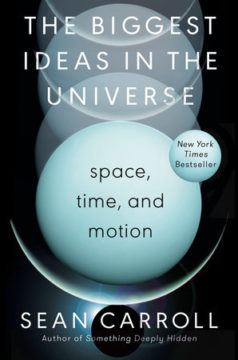Adam Frank at Big Think:
 What Carroll wants is to give readers something of the mathematical essence which, after all, is how physics is done. To accomplish this goal he proposes a novel approach. As he rightly notes, to become a practicing physicist, a student must not only learn the equations and their meanings, but they must also spend untold hours solving the equations in specific circumstances. To give an example, it is not that hard to learn the basic equations of Newtonian gravity. I walk my freshman non-science students through them. The really hard part is solving those equations for something like the motion of a comet around the Sun when it is perturbed by the gravitational pull of Jupiter. That part takes hours and hours of calculation. Learning to solve equations is what week-long graduate student homework sets are for.
What Carroll wants is to give readers something of the mathematical essence which, after all, is how physics is done. To accomplish this goal he proposes a novel approach. As he rightly notes, to become a practicing physicist, a student must not only learn the equations and their meanings, but they must also spend untold hours solving the equations in specific circumstances. To give an example, it is not that hard to learn the basic equations of Newtonian gravity. I walk my freshman non-science students through them. The really hard part is solving those equations for something like the motion of a comet around the Sun when it is perturbed by the gravitational pull of Jupiter. That part takes hours and hours of calculation. Learning to solve equations is what week-long graduate student homework sets are for.
But Carroll is betting that scientifically interested non-scientists don’t need to solve the equations of physics — they just need to know how to read them. For Carroll, understanding specifically what the specific equations say, and how they say it, should be enough to move beyond the metaphors of most popular-science accounts. In this way readers might get a more true and visceral sense of why physics is so potent.
More here.
